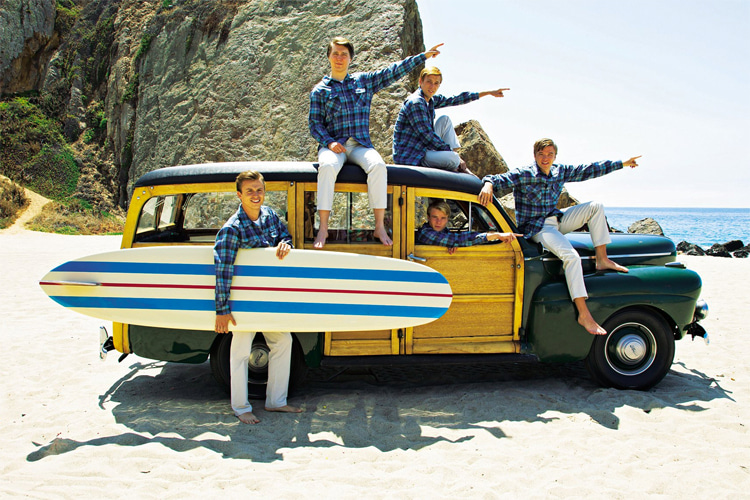Surfing and music have always complemented each other until they eventually blended into a completely new art form - surf music.
Hawaii might be the spiritual home of surfing, but it was in Southern California that the sound of the surf first echoed before spreading across the world.
Today, surf music is an established music genre with its origins in two styles with similar and distinct characteristics: instrumental surf rock and vocal surf pop.
Both categories or movements - fast guitar playing and highly melodic vocals - mimic and try to ignite a feeling similar to riding a wave or the sound of a crashing wave.
The California Sound, often associated with surf music, started taking over the Golden State in the late 1950s and lost its popularity in the mid-1960s before enjoying several comeback waves.
Like a wave set, surf music is destined to stay alive and afloat.
Surf music is more than singing about surfing and playing an instrument like a surfer tames a wave - it's a unique, ever-changing sound with the scent of sea breeze.
Discover some of the most interesting and surprising facts about surf music and the evolution of the California sound:
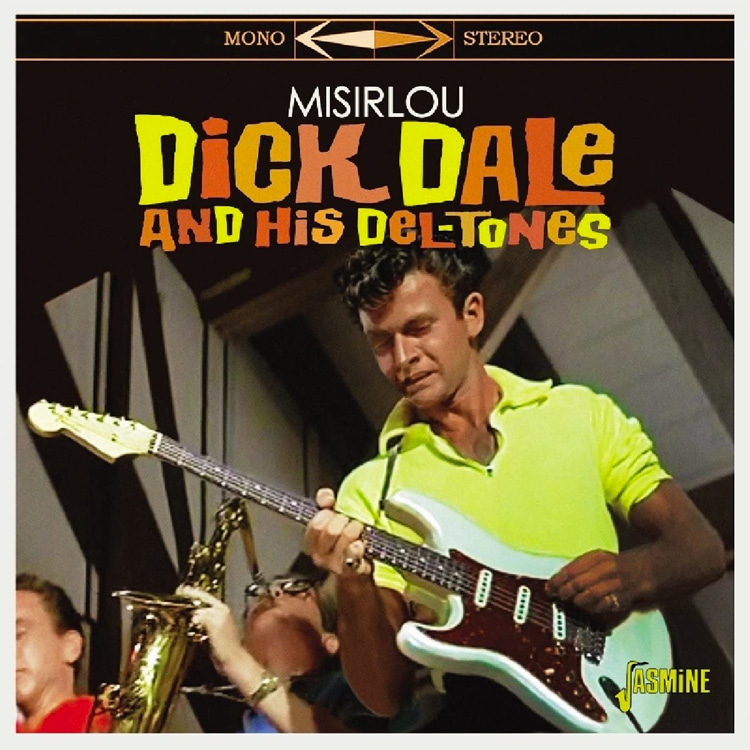
1. The Hawaiians were the first to develop and compose songs and instrumental pieces about and around surfing;
2. Surf music is a surfing-influenced music subgenre that merges instrumental, guitar-driven rock with multi-layer vocal harmonies;
3. The "sound of the surf" marks the shift of surfing as a cultural and social phenomenon from Hawaii to California;
4. Surf music was established and adopted by suburban, middle-class, white Southern Californians;
5. Dick Dale (1937-2019), a surfer and musician, is widely considered the godfather of surf music, the "King of the Surf Guitar," and the pioneer of reverb, one of the most noticeable characteristics of the musical genre;
6. "Let's Go Trippin'" by Dick Dale and His Del-Tones is unanimously regarded as the world's first surf rock song. It was released in the summer of 1961 and climbed to number 60 on the Billboard Top 100 chart several weeks later. The title refers to a slang expression used by those who "tripped down" to the Rendezvous Ballroom in Balboa to listen to the band on weekends;
7. Dale has credited his early Rendezvous Ballroom audiences with using the term "surfing sound" to describe his band's music;
8. The first vocal harmonies associated with surf music were initially introduced by Jan & Dean and The Beach Boys;
9. Surf music is also often mistakenly referred to as surf rock or surf pop, as it is actually a mix of both subgenres;
10. The Challengers were one of the earliest surf instrumental bands in Southern California. Richard Delvy and Jim Roberts formed the band out of their first group, The Bel-Airs;
11. Paul Johnson, one of the founders of the California surf band The Bel-Airs, believes instrumental surf rock music is an original regional American folk music expressing experiences of affluent white kids in Los Angeles suburbs;
12. He once revealed that a surfer approached him in the summer of 1961 and said, "Wow, man - your music sounds just like it feels out there on a wave! You should call it 'surf music'";
13. The Bel-Airs had recorded a tune associated with surf music - "Mr. Motto" - before Dick Dale released "Let's Go Trippin'";
14. In 1961, The Beach Boys unveiled "Surfin'," surf music's first vocal hit;
15. According to historians, there are several examples of instrumental rock songs recorded before 1961 that later came to be considered surf music, including Johnny Smith's "Walk Don't Run" and several tunes by The Ventures;
16. The Teenage Fair was held for the first time in 1962 at Pacific Ocean Park in Santa Monica. The 10-day-long event provided music, surfing clinics, movies, hot-rod shows, amusement rides, fashion shows, dance contests, and the Miss Teen USA beauty pageant, among other features and attractions of interest to teenagers, making it one of the paramount social and cultural events in Southern California that helped to expose and promote surf music;
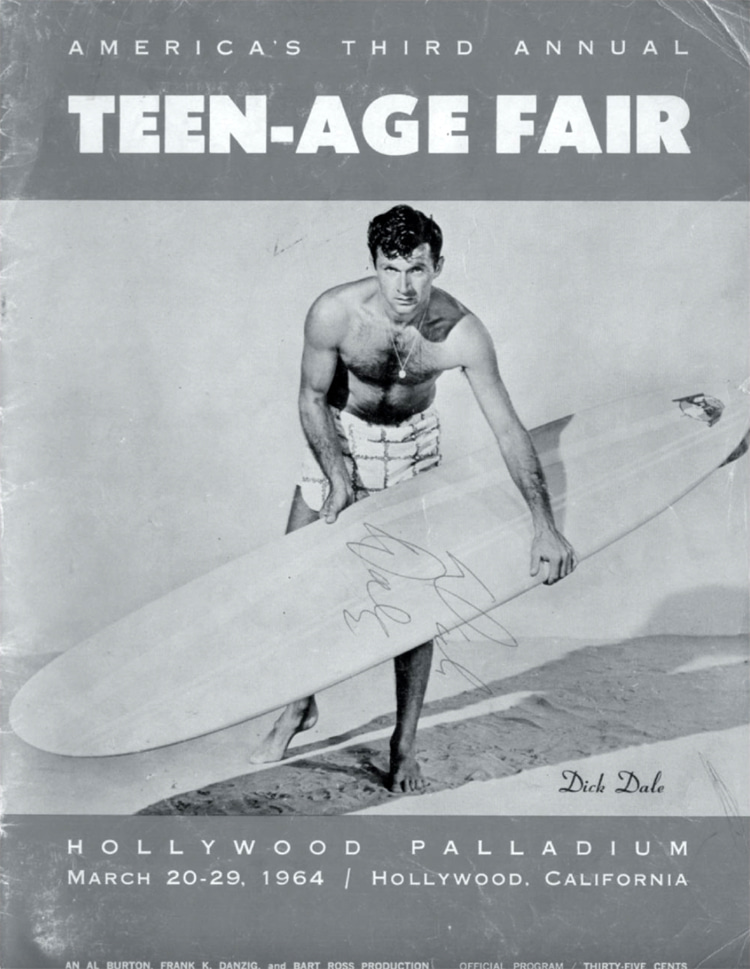
17. Interestingly, KMEN, a radio from San Bernardino located at the westernmost edge of the Mojave Desert, was the first radio station to play Dick Dale's records;
18. After recording "Pipeline," The Chantays, a band formed in Santa Ana, California, in late 1961, were the only surf instrumental band at the time to tour Japan in late 1965 and early 1966;
19. The fact that Dick Dale and The Bel-Airs played on the beaches of Southern California in the summer of 1961 helped build a strong and natural connection between the sound and the sport;
20. Surfers who were part of the core audiences at shows by Dick Dale, the Bel-Airs, and other instrumental surf bands didn't like The Beach Boys' vocal approach. They were considered amateur poseurs;
21. In its first years, live instrumental surf rock music performances reflected spectacular displays of hypermasculinity and power;
22. The Surfaris were one of the first inland surf bands to enjoy success with their 1962 surf instrumental hit, "Wipe Out." The song was recorded in a single take and was based on a marching cadence the drummer played in his high school marching band, coupled with a guitar riff inspired by an earlier Duane Eddy recording;
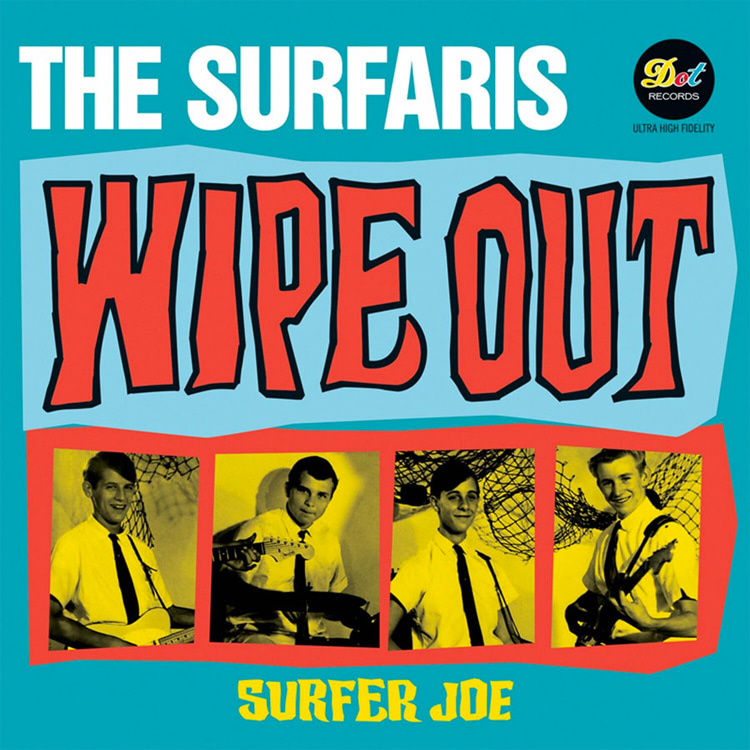
23. "Baja," a song released in 1963 by the Colorado-based band The Astronauts, could very well mark the symbolic moment when surf music became a proper genre, not necessarily connected with the practice of surfing. The five-piece group lived thousands of miles away from the ocean;
24. Here's how Variety Magazine described the California sound in 1963: "A new musical fad is sailing in from the Coast. It's called 'surfing music,' and it's expected to take hold of the teenage market on a national scale within the next few months. Its followers are just teenagers who've exchanged the hot rod for the surfboard. Some surfers say that surfing has become a 'way of life' and the surf sound is a way for them to identify with music";
25. In 1963, Fender Musical Instruments enjoyed a sudden increase in guitar sales;
26. The Lively Ones recorded their signature instrumental, "Surf Rider," in 1963. The song would later be used as the closing theme for Quentin Tarantino's 1994 film "Pulp Fiction";
27. Technically, surf music features an electric lead guitar playing the melody, accompanied by an electric bass, a drum kit, and sometimes an electric rhythm guitar or piano. Some bands also included a trumpet and/or saxophone;
28. The most common sonic patterns include 12-bar blues chord progressions and harmonic minor scale compositions, emphasizing the major chords built on the fifth and sixth scale degrees, one-half step apart;
29. The reverberation used by surf guitarists creates the effect of playing in a large space in which echoes prolong sound. That effect is often described as "wet," thus the literal connection to surfing;
30. The Fender Stratocaster is the guitar primarily associated with and played in surf music songs alongside Fender amplifiers;
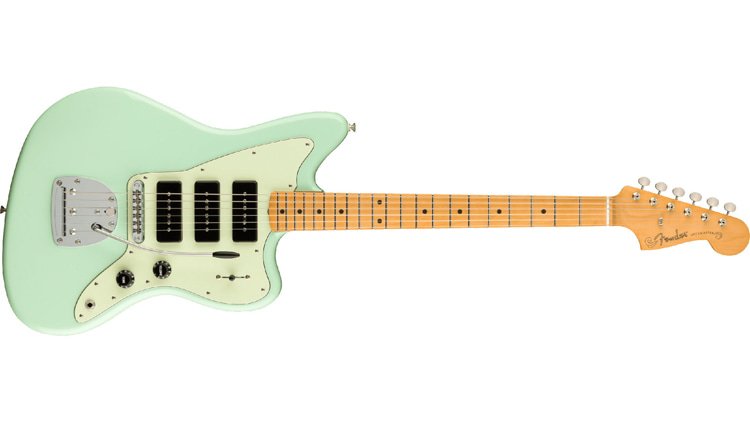
31. Nearly all surf bands dressed alike on stage, often matching sports coats and ties. However, in the wake of the Beatles' strong emergence in early 1964, some surf groups quickly adopted the British band's dress code on stage;
32. Del-Fi Records, one of the major independent labels to release surf music, launched over a dozen surf albums and an equal number of singles in 1963;
33. Dennis Wilson was the only member of The Beach Boys that was actually a surfer;
34. The Beach Boys were the first band to add occasional vocables like "bom bom dit di dit dip" to their catchy harmonies;
35. The Beach Boys' connection to surfing was so clear and recurrent that it reached a point where, lyrically, their songs even referred to the physical hardships of surfer's knots;
36. "Surf City," a song written by Brian Wilson, was offered to The Beach Boys' best friends, Jan and Dean, and became an instant nationwide hit;
37. "Surf City" defines the roles of men and women - men surfed, and women were one of the rewards of being a skilled surfer. The lyrics promise "two girls for every boy";
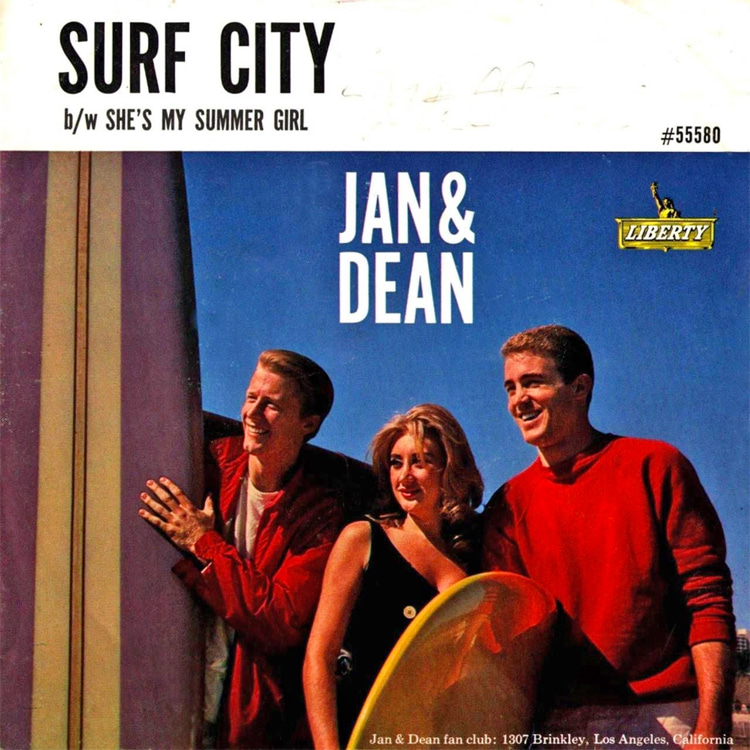
38. One of the most comprehensive and interesting analyses of surf music can be read in "Surfing About Music," a book by Timothy J. Cooley, and in "Southern California Surf Music, 1960-1966," a book by John Blair;
39. Although surf music picked up a growing number of fans within the surfing community, there were a few dissonant voices. Big wave surfing pioneer and surfboard shaper Greg Noll once said that "The Beach Boys and all the rest of those guys (...) trying to get on the surf scene, we hated all that crap";
40. Drew Kampion, the former Surfer Magazine editor, stated: "As a surfer, we never really considered The Beach Boys to be surfer music, frankly";
41. Surf legend Mike Doyle said that when he listened to The Beach Boys' "Surfer Girl," he thought, "It was so hokey. It was a rip-off. The Beach Boys were stealing our culture";
42. After the initial boom of surf music, many surfer musicians felt the need to publicly separate their music from their wave riding activities;
43. In 1963 and 1964, Honolulu held the Waikiki Surf Battle at the Waikiki Shell outdoor auditorium, where 18 instrumental surf bands from Oahu performed in front of a screaming audience;
44. In the early 1960s, Hawaii had several surf bands with female musicians and singers, including The Impacts (Bonnie Connor), the Frolic Five (Pearl Miyashiro, Charlene McCabe, and Marsha Kalima), the Lepricons (Cynthia Herolaga), Judy & the Belmonts (Judy Cuales), and Denny & the Dukes (Cheyenne Ragil), and the all-female Angie & The Originals;
45. The world's first female surfing vocal combo was The Honeys, from Los Angeles. Despite failing to hit the charts in the United States, they cracked the top 10 in Denmark;
46. Kathy Marshall, who was named the "Queen of the Surf Guitar" by Dick Dale, took up the guitar at the age of 13 but left no recordings behind;
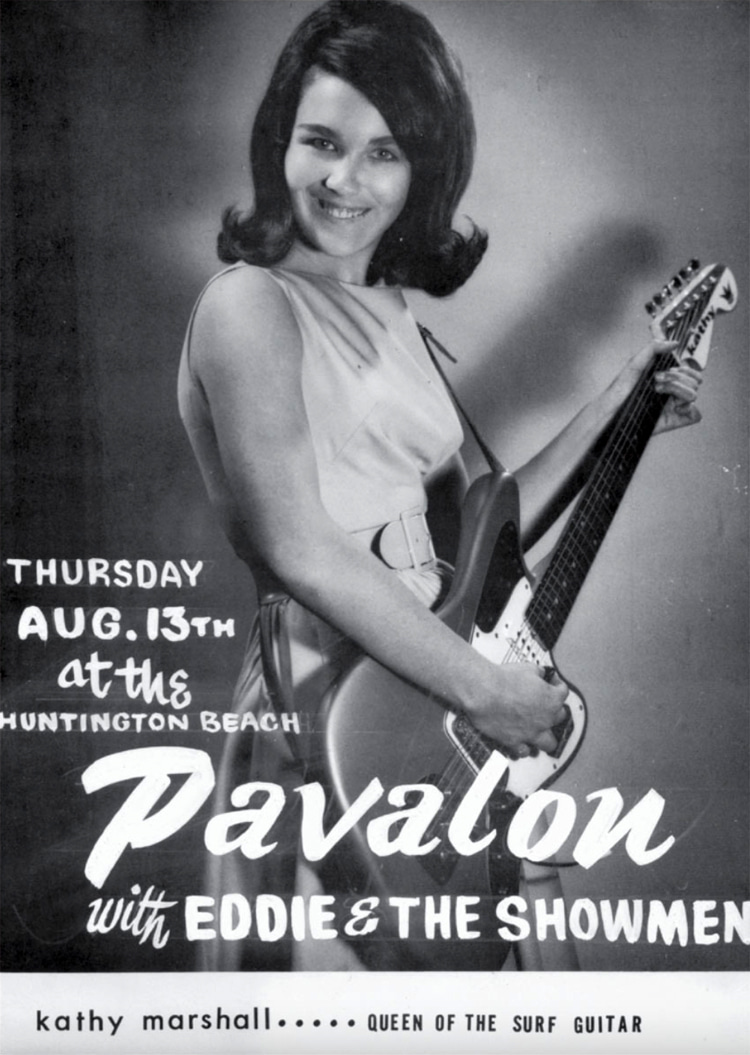
47. For a short time (late 1962, early 1963), there were two surf bands called The Surfaris. One band was from Glendora (Los Angeles County), and the other was from Fullerton and La Habra (Orange County). The "coincidence" was resolved through a court order;
48. Dick Dale starred as himself in the Hollywood movies "Beach Party" (1963) and "Muscle Beach Party" (1964);
49. The Pyramids, a five-piece surf band from Long Beach known for their hit surf instrumental "Penetration," were one of the few surf bands to appear in a theatrical motion picture, the 1964 film "Bikini Beach," performing at the California National Guard Armory in Riverside;
50. "The Endless Summer," the ultimate surf movie by Bruce Brown released in 1965, featured a soundtrack by a then-unknown, unrecorded band, The Sandals. Their music combined acoustic and electric guitars with a melodica. For the film, The Sandals recorded ten original tunes and two covers by Jet Harris and Hank Marvin;
51. The "Theme from The Endless Summer" features harmonically ambiguous guitar ostinatos that alternate between two major chords one step removed and slow sustained-note melodies repeated without variation;
52. By 1965, the surf music fever - instrumental and vocal - had already disappeared from the charts, and its airplay had begun to fade;
53. In 1969, George Greenough filmed and produced "The Innermost Limits of Pure Fun," one of the first surf movies to feature a surf music soundtrack created by a surfer - Denny Aaberg - and his jam band, Farm;
54. The surf music genre never died, though. Instead, it returned periodically in waves. In 1997, the movie "Searching for Tom Curren" featured a surf music-influenced soundtrack by Curren's band;
55. There are more surf music groups in the 21st century than there were in the early 1960s;
